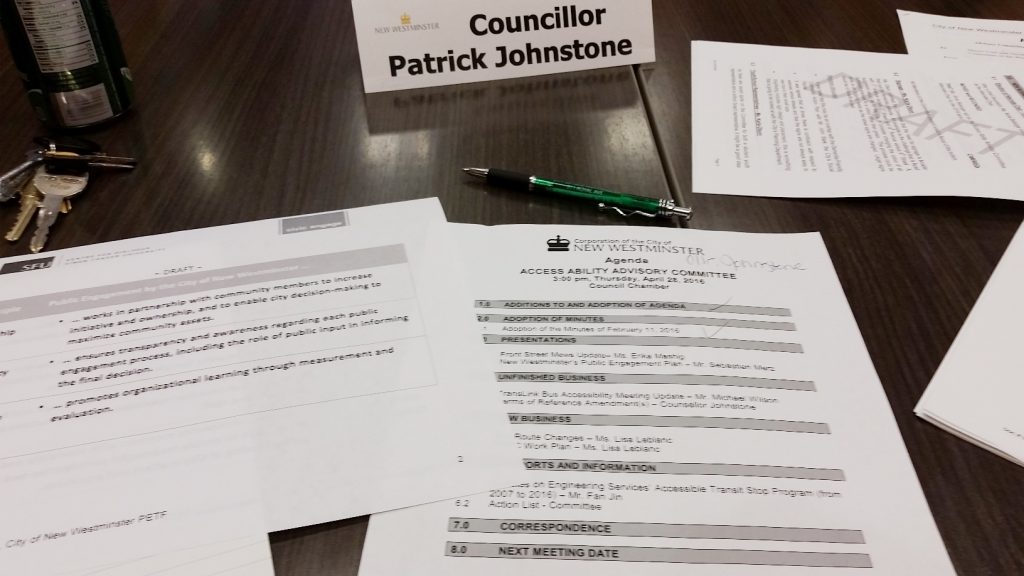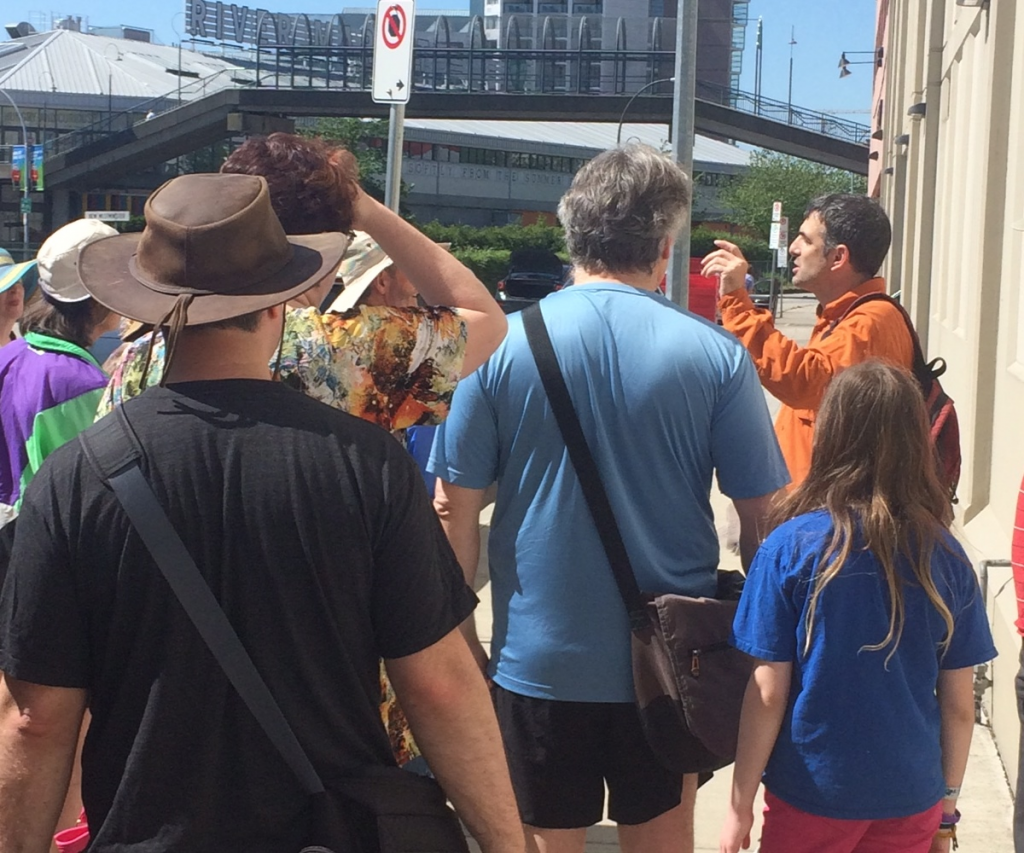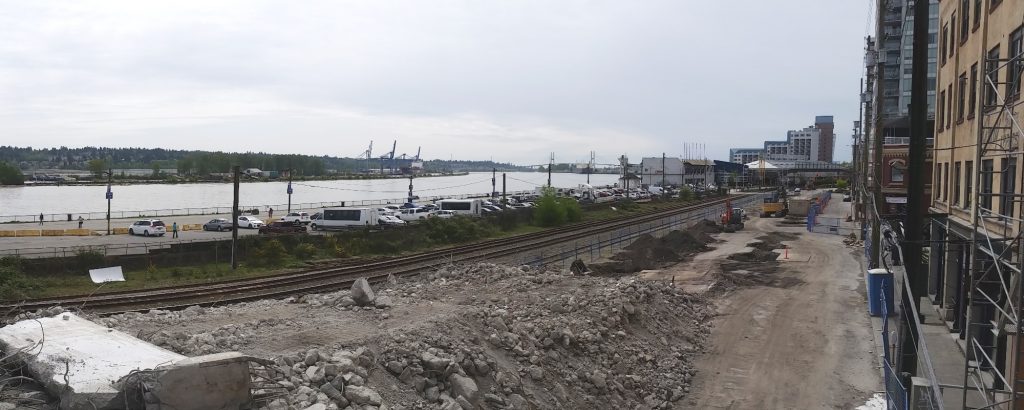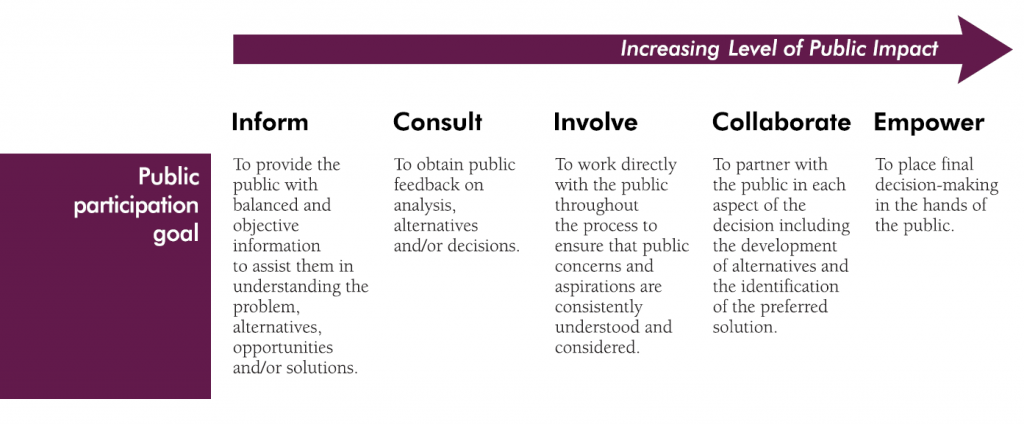Our Regular Council Meeting of May 2, 2016 had an interesting flow, with lots of Proclamations, most of them read twice. I’ll skip the formalities, and keep the business at hand:
Review of Council Remuneration Policy
The City has a policy on how Council pay is calculated. (yes, we get paid).
The process allows a review every term (now 4 years, it used to be every three years) that compares the pay level to that of 11 comparator Municipalities – those of similar size (so big municipalities like Vancouver and Surrey are not included, nor are small ones like Anmore). We compare our pay to theirs using a regression analysis using population and the size of the Municipal budget. The HR department them pulls the mid-range value and recommends that we try to match that.
The analysis has recommended a one-time raise of about 8.9% for Councillors, and about 3.5% for the Mayor to bring us back to the middle of the regression. Over the term, Council will get annual raises equal to the CPI.
This was announced a couple of weeks ago, and notices were put in the paper. The Record did a nice little story, and I personally receive a single piece of correspondence from someone I know well who thought it was outrageous. He was unable to provide to me a better system to determine how council wages should be regularly adjusted, other than linking it to the Collective Agreement of our Union Members, which (arguably) creates a perception of conflict.
No-one came to Council to speak on the issue, and Council voted to approve the process, which will come back to Council after the formal report is created by Human Resources.
The following items were moved on Consent:
Recruitment: Sapperton Old Age Pensioners Representative to
the Seniors Advisory Committee
This nomination came from the Sapperton Pensioners, the organization that owns and operates the Sapperton Pensioners Hall, where a lot of seniors programming takes place. Council move to approve the nomination of Calvin Donnelly as rep the to Seniors Advisory Committee. And you all know who he is!
Amendments to the 2016 Schedule of Regular Council Meetings
We are adjusting our meeting schedule a bit to make workshops work better. Please update your VCRs.
810 Quayside Drive (River Market): DVP No. DVP00606 to Vary Sign Bylaw Requirements – Consideration of Issuance
The River Market wants to add some colourful banner signage to the north side of their building to call attention to their tenants. The signs to not fit the strict language of the Sign Bylaw, but do not (to my eye) look too out of scale or obtrusive. As the variance of the Bylaw requires public notice and an opportunity to be heard, we will review this application at our meeting of May 30, 2016. C’mon out and let us know what you think.
Repeal of “Downtown Parking Commission Bylaw No. 5769, 1988
DTPC was set up to manage the Downtown Parkade, back when it was a BIA/City joint venture. Since the refurbishment of the east half of the Parkade and the removal of the West Half, there is much less to manage, and the actual day-to-day operation has been contracted out for years. As such, the DTPC has lacked much to do. With the consent of the chair of the Commission and on the advice of staff, it was thought best to simply disband the Commission, which requires a repeal of the Bylaw.
2016 Spring Freshet and Snow Pack Level
This report comes from the Province every year, and provides guidance to our Emergency Services staff to determine the threat level for flooding during the Spring Freshet. Things look good this year, with slightly below normal snowpacks, reducing the risk of freshet floods. We are still going to stay vigilant and ready to react, as the rate of melt-off also impacts the flood risk, but the message right now is positive.
325 and 329 Ewen Avenue: Proposed Rezoning from (M-1) to (RQ-1)
These are a couple of properties in Queensborough that are part of the “Special Study Area” where Platform Properties is working on a mixed commercial and residential development. This an area that will likely remain single family residential, but are zoned industrial. This causes some problems for the people who are currently living in these homes around insurance and such.
Additionally, these properties cover areas where a right-of-way would be useful for providing servicing to adjacent properties, as there are rights-or-way on either side of the properties that don’t connect. So rezoning will coincide with dedication of these rights-of-way for future use.
This Rezoning will go to public hearing on May 30, 2016. C’mon out and tell us what you think!
518 Ewen Avenue: Proposed Rezoning from (C-1) to (RQ-1) to Permit
Construction of a Single Detached Dwelling
This property is also in a Single Family Detached area, but is zoned for commercial. The owner would like to build a house, and a Rezoning is required.
This Rezoning will go to public hearing on May 30, 2016. C’mon out and tell us what you think!
129 Tenth Street: Proposed Rezoning
This development in the Brow of the Hill is an interesting example of the “missing middle”, eight ground-based townhouses in two separate buildings on a single large lot between a high rise apartment building and single family homes.
This Rezoning will go to public hearing on May 30, 2016. C’mon out and tell us what you think!
602 Ewen Avenue (Spagnol’s Townhouses) – Proposed Rezoning
This proposal in Queensborough is also a good example of “missing middle” housing types – 16 townhouses that are effectively small detached homes. The goal here is to get family sized homes on small footprints to increase the affordability.
This Rezoning will go to what is starting to feel like a very busy public hearing night on May 30, 2016. C’mon out and tell us what you think!
ACTBiPed – Request for Endorsement of the Bike Right BC Initiative
Teach a youth to ride a bike safely, get them to realize that a bicycle increases their freedom in a way rides from Mom and Dad never do, and they are more likely to keep using bikes as adults. All evidence is that they will be healthier, happier adults.
We are working on building safer bicycle infrastructure in the City, and have created safe routes to schools. We even help (through grants) the cycling advocacy group HUB New West teach safe cycling to school kids. I am amongst those who believe that cycling safety should be part of the regular school curriculum, just as other health education is.
Adopting this Framework shows the City’s support for working to develop a generation of engaged, confident, and safe cyclists.
We then discussed this Report for Action:
Tree Bylaw – Review of Implementation
We are a few months into having a Tree Bylaw, and several people working on development are starting to become aware of the Bylaw, so naturally, concerns are beginning to be raised in the community by people who realize the Bylaw applies to them.
There is a concern about how a Tree Bylaw may restrict your ability to build to your full allotment – which speaks to how a Tree Bylaw is going to allow us to manage infill density while protecting trees, which many would include on the fuzzy idea of “neighbourhood character”.
It is probably a good time for Council to get feedback from staff about how the roll-out of the Bylaw is going. Are we getting push-back or problems cropping up? I had a resident call me to raise concerns about a large Holley Tree in her yard that meets the size measurement for “protection”, but is an invasive species which may not be of a net benefit when we talk about the ecology of the City. We don’t want to protect trees at the cost of ecology.
There are other details around the security deposit we take for tree replacements, and what we are doing as far as the other parts of the urban Forest Management Strategy. We should get a report back in the next few weeks.
The following items were removed from Consent:
Recommended Actions in Response to the Issue of Tenant Evictions Through Renovations
This issue has been talked about regionally for decades, but I fear we are seeing the beginning of a wave here in New Westminster. I have been involved in three situations in my short time on Council where residents have brought this issue to them, as it was affecting them personally. The regional craziness with land values has reached us here in New West, and we are the City with the highest proportion of our residents living in rental housing, with a significant proportion of that in an older and more affordable rental stock.
Both “reno-victions” and “demo-victions” are going to increase in New Westminster, and although there is a difference in how the City becomes aware of them, there is very little difference for the person, often living paycheque to paycheque, who has two months to find a new home in a remarkably tight regional rental market.
We are severely limited in what we can actually do, as the Residential Tenancy Act if a Provincial law, but we can assure that residents in our city know their rights, and renters know their responsibilities. We can also point residents towards resources, government and not-for-profit, that can help them.
I hope we can find creative ways, through our permit application processes at City Hall, to determine when evictions may be triggered, and use that reach out to renters, deliver information to impacted tenants about their rights and responsibilities, and provide contact information for services.
Stop work orders and tickets are available for us as enforcement if building manager fail their permitting responsibilities, but those penalties are pretty small, and not much of a deterrent.
Council moved that we take a motion requesting stronger protection for tenants against reno-victions to the LMLGA and UBCM, as our conduit towards lobbying the provincial government for changes in legislation.
1031 Sixth Avenue: Heritage Revitalization Agreement – Update
This topic was discussed last meeting, and it appears that the owner and Planning staff are once again back to exploring Heritage Restoration Agreement possibilities, and demolition is not imminent. More to come…
Amendment to Water Shortage Response Bylaw
Last year, we saw some pretty severe water restrictions, which saw high compliance across the regions, and we got through a slightly scary drop in our reservoirs without reaching an emergency level of depletion. The snowpack is a little better this year, but the spring has not been all that rainy, so we have yet to know what our forecast hold for this summer.
Metro Vancouver is forecasting enough concern that stage 1 water restrictions are going to start a little earlier than last year. Stage 1 is not very restrictive, and with any luck we can get through the summer at that level.
Last year, we at the City heard some complaints from residents that our enforcement measures were not what the public expected. I think we can all go back 8 months and remember seeing that bright green lawn that stood out from all of the neighbours…
This year, Council has asked staff to track complaints, responses, warning and fines, and to report back to council on this compliance so we can assure the public that our Bylaws are being enforced. On a similar note, we are making adjustments to our Bylaw to facilitate nematode treatment of lawns at the appropriate time (that can only happen in June when the grubs are at the right life stage that the nematodes will infect them). There were a few language changes to make to the Bylaw before we give it first reading, so watch for that at a Council meeting coming your way soon.
We received some Correspondence to discuss:
Letter dated April 11, 2016 regarding Fraser River Middle
This issue is an interesting one. With the development of the new Middle School in the Brow of the Hill neighbourhood, some parents at the west end of the catchment are concerned about the distance to the school. There is some irony in the fact that the School District’s first proposal to place this school in the West End was vociferously opposed by the neighbourhood, but we are here in 2016, and that ship has sailed.
Schools don’t run buses anymore – it simply isn’t in their budget. TransLink is not interested in getting into the school bus business. Running buses for schools is well outside of the normal jurisdiction of a local government, and could be read as a significant downloading of a provincially-funded responsibility to local government. The division of powers is pretty clear – we build the roads, sidewalks and bike paths, the province builds the schools and gets kids there.
That said, we are all the same community, and if we can help facilitate talks with funding partners, TransLink, the School District, and the parents, then we will do what we can. I’m not sure how a bus system would operate – a significant number of legal and liability issues exist. And I am sure that the parents in Queensborough sending their kids to NWSS will be paying special attention to this discussion, as transportation has long been an issue for them.
Letter dated April 22, 2016 from the Rivershed Society
This is a request for some festival or partnership grant money outside of the regular cycle. We referred to staff, although Council did not sound very receptive to the idea…
We then moved onto everyone’s favorite call-and response chorus where we read Bylaws:
Zoning Amendment (325 and 329 Ewen Avenue) Bylaw No. 7811, 2016
As mentioned above, this zoning amendment for two adjacent properties in Queensborough received two readings.
Zoning Amendment (518 Ewen Avenue) Bylaw No. 7833, 2016
As also mentioned above, this zoning amendment for a single family house in Queensborough received two readings
Zoning Amendment (129 Tenth Street) Bylaw No. 7839, 2016
This townhouse project in the Brow of the Hill received two readings.
Zoning Amendment (602 Ewen Avenue) Bylaw No. 7840, 2016
This townhouse/small home project in Queensborough received two readings.
Downtown Parking Commission Repeal Bylaw No. 7844, 2016
As discussed above, the dissolution of the Downtown Parking Commission requires a Bylaw, and we gave that Bylaw three readings.
Downtown New West BIA (Primary Area) Parcel Tax Bylaw No. 7828, 2016
Downtown New West BIA (Secondary Area) Parcel Tax Bylaw No. 7829, 2016
Uptown New West BIA Parcel Tax Bylaw No. 7830, 2016
The three Parcel Tax Bylaws to support our BIAs, as discussed last meeting were officially adopted. This is now the Law of the Land, adjust your behavior accordingly.
Tax Rates Bylaw No. 7831, 2016
The final piece of our 2016 budget and taxation process, the Bylaw to support our property tax increase was officially adopted. This is now the Law of the Land, adjust your behavior accordingly.
 With a fair smattering of this:
With a fair smattering of this:





